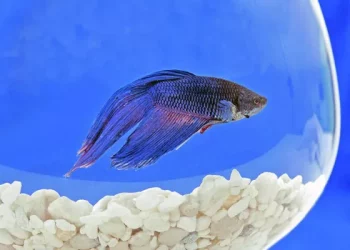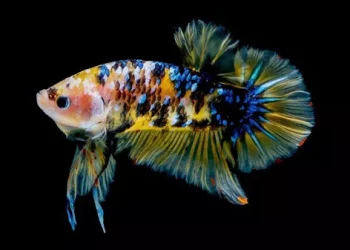Ram cichlids are among the most popular freshwater aquarium fish due to their stunning colors, peaceful temperament, and relatively easy care requirements. If you are considering adding these beautiful fish to your aquarium, one of the most common questions you might have is: How many ram cichlids should be kept together?
This question is vital because understanding the social behavior, territorial needs, and environmental preferences of ram cichlids can help you create a thriving aquatic community. In this article, we will explore everything you need to know about ram cichlid social dynamics, how to keep them healthy and happy, and how many of them should ideally be housed together.
What Are Ram Cichlids
Ram cichlids belong to the genus Mikrogeophagus, with the most common species being the Mikrogeophagus ramirezi or German blue ram. These small, colorful cichlids are native to the warm, slow-moving waters of the Orinoco River basin in South America.
Physical Characteristics
Ram cichlids typically grow to about 2–3 inches (5–7.5 cm) in length, making them a manageable size for most home aquariums. They are best known for their vibrant coloration, which includes shades of blue, yellow, and red. Their iridescent scales and distinctive eye markings make them visually striking.
Temperament and Behavior
Unlike many other cichlid species that tend to be aggressive and territorial, ram cichlids are generally peaceful and shy. They often prefer calm, well-planted tanks with plenty of hiding places. However, despite their generally docile nature, ram cichlids do exhibit territorial behavior, especially during breeding.
Why the Number of Ram Cichlids Matters
Before deciding on the number of ram cichlids to keep together, it is essential to understand their behavior and how social grouping affects their wellbeing.
Territoriality and Social Hierarchy
Ram cichlids are semi-aggressive, particularly when breeding. In the wild, they stake out territories, especially for spawning and raising fry. In a confined aquarium space, this natural behavior can lead to stress and aggression if their environment does not accommodate their territorial needs.
Stress and Health
Keeping too many ram cichlids together without adequate space or environmental enrichment can cause stress, leading to illness and reduced lifespan. Conversely, keeping them alone or in unsuitable social groups can also result in loneliness or behavioral problems.
Tank Size and Environmental Factors
Tank size plays a crucial role in determining how many ram cichlids you can keep together comfortably. Proper water quality, adequate hiding spots, and suitable tank mates also influence their social harmony.
How Many Ram Cichlids Should You Keep Together?
The Basic Rule: Pair or Small Group
Ram cichlids are often recommended to be kept in pairs because they form monogamous breeding pairs in nature. This pair dynamic reduces territorial disputes and stress.
One Pair (2 fish): The most common and recommended setup is one male and one female. This is ideal for breeding and maintaining a peaceful environment.
However, some aquarists prefer to keep ram cichlids in small groups, such as:
Groups of 4 to 6: If the tank is large enough (typically 30 gallons or more), keeping a small group can work well, but the tank should have plenty of space, plants, and hiding spots to reduce territorial aggression.
Avoid Keeping Too Many
Due to their territorial nature, overcrowding ram cichlids can lead to increased aggression, stress, and health problems. Overcrowding often results in:
- Increased chasing and fighting.
- Stressed fish that are more susceptible to disease.
- Poor water quality from excess waste, which can harm sensitive ram cichlids.
Juveniles vs Adults
Young ram cichlids are less territorial and more social, so you can keep more juveniles together initially. But as they mature, territorial behavior becomes more pronounced, and it may be necessary to separate or reduce their numbers.
Tank Setup for Ram Cichlids
Proper tank setup is crucial for maintaining peace among multiple ram cichlids.
1. Plants and Hiding Places
Ram cichlids thrive in heavily planted tanks with plenty of hiding places. Live plants like Amazon swords, Java ferns, and Vallisneria provide cover and break sight lines, which helps reduce aggression.
2. Substrate and Decorations
Use a soft substrate like sand, which mimics their natural environment. Add driftwood, rocks, and caves to create visual barriers and territorial boundaries.
3. Water Conditions
Ram cichlids are sensitive to water quality. They prefer:
- Temperature: 78–85°F (25.5–29.5°C)
- pH: Slightly acidic to neutral (6.0–7.0)
- Soft to moderately hard water
Consistent water changes and good filtration are essential, especially in tanks with multiple fish.
Social Behavior of Ram Cichlids in Groups
Pair Bonding and Breeding
Ram cichlids form strong pair bonds during breeding and will defend their territory aggressively against intruders. Keeping just one pair per tank is best for breeding success and reducing conflicts.
Hierarchy in Groups
In small groups, a dominance hierarchy develops. Usually, one male will dominate, and subordinate fish will keep to less desirable territories or hide more. This hierarchy can prevent constant fighting but requires enough space to allow subordinate fish to retreat.
Compatibility with Other Fish
Ram cichlids are generally peaceful but can be stressed by overly aggressive or very active tank mates. Choose peaceful companions of similar size to maintain harmony.
Signs You May Have Too Many Ram Cichlids
- Frequent chasing and fighting.
- Damaged fins or injuries.
- Fish hiding constantly or showing signs of stress.
- Declining water quality due to overstocking.
- Reduced appetite or lethargy.
If you notice these signs, consider reducing the number of ram cichlids or increasing tank size.
Tips for Keeping Ram Cichlids Together Successfully
- Start with a Pair: This is the safest and easiest way to keep ram cichlids happy.
- Provide Plenty of Space: Bigger tanks with lots of plants and hiding spots minimize conflicts.
- Maintain Water Quality: Regular water changes and efficient filtration are critical.
- Monitor Behavior: Watch for signs of aggression or stress and adjust the environment or stocking accordingly.
- Feed a Balanced Diet: High-quality flakes, pellets, and occasional live or frozen foods keep them healthy.
- Consider Tank Mates Carefully: Avoid aggressive or very active fish.
Conclusion
Ram cichlids are beautiful, peaceful fish that bring color and personality to any freshwater aquarium. When it comes to how many should be kept together, the answer depends on their natural behavior, tank size, and setup. The general recommendation is to keep them in pairs or small groups in adequately sized and well-planted tanks.
Keeping too many ram cichlids together in a small space can lead to stress and aggression, negatively impacting their health. By understanding their social needs and providing the right environment, you can enjoy the fascinating behavior and vivid colors of ram cichlids for years to come.
Related Topics:






















